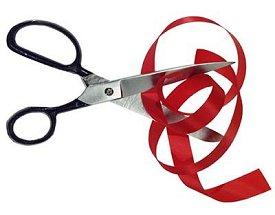By Terry Jones • Investor’s Business Daily
Cutting Rules: Baseball season is winding down and, as it does, so is another grueling annual event: The U.S. government’s fiscal year. But this year, with just two months to go, something remarkable is happening: Regulations are being slashed at a record rate.
A new report by the American Action Forum (AAF) says that not only is President Trump meeting his deregulation goals, he’s exceeding them — in some cases, by a large amount.
“Collectively, executive agencies subject to regulatory budget remain on pace to double the administration’s overall saving goal,” wrote the AAF’s Dan Bosch. “On an individual basis, 12 of 22 agencies have already met or surpassed their savings target.”
“The Department of Labor enjoys the largest total savings of covered agencies with $417.2 million,” Bosch wrote. “The Department of Health and Human Services comes in second in savings … at $285.6 million. The Department of Transportation ranks third in annualized savings, followed by the Department of Justice.”
All told, the government aimed for savings of about $686.6 million from deregulation so far this year. Right now, the government has saved some $1.308 billion from 47 separate deregulation actions.
This might not sound like much, given the government’s immense size. But it is. Because the economic impact is much larger than the mere dollar amount in regulations cut. And it’s also important because President Trump has set a regulatory budget that limits the number of rules and their costs.
As the Competitive Enterprise Institute noted earlier this year in its “Ten Thousand Commandments” annual report, federal regulations cost a lot more than their stated dollar amount. As of last year, regulation and federal intervention in the economy cost Americans an estimated $1.9 trillion. And that’s one of the lowball estimates out there.
How much is that? It’s the equivalent of a $15,000-per-household tax levied each year in perpetuity. That’s more than the average family spends on food, clothing or transportation. Only housing takes more of the family budget.
If regulation were a nation, and let’s be thankful it’s not, it would be the eighth-largest economy in the world. Regulation even exceeds the IRS’ total take in corporate and individual income tax. That’s how big it is.
Last year, Trump began cutting rules in earnest as soon as he entered office. He slashed the total number of pages in the Federal Register, the government’s regulatory bible, from 95,894 in 2016 to 61,308 pages in 2017. That’s a decline of 36% and the lowest since 1993. This year it will go even lower.
This is a big deal for businesses, which find themselves increasingly burdened by mandates, orders, rules and commands issued by Washington bureaucrats who know nothing about their companies.
The burden on small businesses is especially acute. A National Small Business Association survey found that small business owners spend more than 80 hours a year just dealing with regulations. In the first year alone, a small business will spend on average roughly $83,000 to comply with government rules. That can be the margin between staying open or going bankrupt.
Deregulation’s Impact
“The impact of regulatory burden cannot be overstated,” the NSBA noted. “More than one-third have held off on business investment due to uncertainty on a pending regulation, and more than half have held off on hiring a new employee due to regulatory burdens.”
The record regulatory siege under President Obama goes a long way toward explaining his poor economic performance. With growth averaging below 2%, his was the worst administration for growth in postwar history.
The Trump economy, by contrast, is today growing at just a nick below 3% a year. Median annual household income stands at $62,175 currently, the highest level since 2000. Unemployment in June matched its lowest level in half a century. In short, the economy is operating on an entirely different level than during the Obama years.
It’s made a huge difference in Americans’ confidence, as shown in recent strong gains in our own IBD/TIPP Economic Optimism Index, which rose to 58.0 in August, its highest level since January of 2004. The economy is again growing robustly and creating jobs, thanks in large part to Trump’s deregulation, which acts like a giant tax cut — one you didn’t even know you got.
